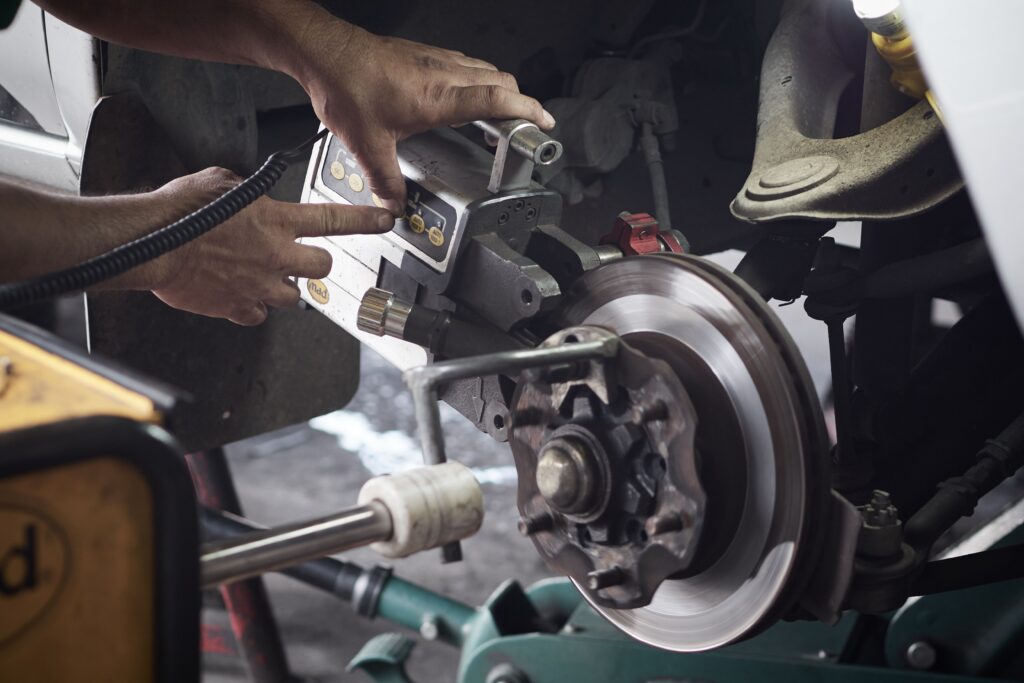You might think air brake systems in semi trucks are just there to blow hot air, but in reality, they are an important safety feature. Understanding how these systems operate can mean the difference between a smooth stop and a potential disaster on the road.
From the air compressor to the brake chambers, every component plays an important role in ensuring your heavy vehicle comes to a halt when needed. So, next time you hit the brakes, remember the intricate workings behind this essential safety mechanism.
Key Takeaways
- Air brake systems in semi trucks rely on compressed air for powerful and reliable braking.
- Proper maintenance of semi truck air brake components ensures optimal performance and safety.
- Compared to hydraulic systems, air brakes offer greater stopping power and consistent performance.
- Understanding the functionality and maintenance of air brake systems is crucial for efficient semi truck operation.
Importance of Air Brake Systems
The importance of air brake systems on semi trucks can’t be understated, as they’re essential for providing reliable and efficient braking power for heavy commercial vehicles.
Air brakes work by utilizing compressed air to activate the brakes, guaranteeing effective stopping power when needed. Brake chambers play a critical role in this process, converting the air pressure into mechanical force that engages the brakes.
Proper maintenance of these systems is vital to prevent failures and assure safety on the road.
Components of Air Brake System

How do the various components of the air brake system in a semi truck work together to make certain efficient braking performance? The key components include:
- Air Compressor: The air compressor plays an important role in pressurizing air for the system, ensuring an adequate air supply for braking operations.
- Pressure Regulator: The pressure regulator is responsible for maintaining ideal pressure levels within the system. By regulating the air pressure, it helps enhance braking efficiency and performance.
- Brake Chambers and Slack Adjusters: Brake chambers convert the compressed air into mechanical force to activate the brakes, allowing the vehicle to slow down effectively. Slack adjusters play a crucial role in maintaining proper clearance between the brake shoes and drums. They adjust for wear and tear, ensuring consistent braking performance and overall safety.
These components work in tandem to ensure the proper functioning of the air brake system, ultimately enhancing braking efficiency and contributing to the safe operation of semi trucks. Regular maintenance and attention to these components are essential for ideal braking performance.
Functionality of Air Brakes

To understand the functionality of air brakes on semi trucks, consider their reliance on compressed air for effective operation.
The air brake system in semi trucks utilizes compressed air generated by the compressor, which is stored in tanks and then distributed to various components when needed.
When the driver applies the brakes, the compressed air is used to actuate the brake chambers, which in turn push the brake shoes against the brake drums to create friction and slow down the vehicle.
The slack adjuster guarantees that the proper amount of force is applied to the brakes by adjusting for wear and tear on the brake components.
This conversion of brake pressure into mechanical force is critical for the safe and efficient operation of the braking system on semi trucks.
Regular maintenance and monitoring of the brake pressure are essential to guarantee that the air brake system functions optimally and provides reliable stopping power when needed.
Benefits of Air Brakes
Shifting from the operation of air brakes, grasping the advantages they offer in stopping power and durability is key for appreciating their superiority over hydraulic brake systems. Here are the benefits of air brakes:
- Stopping Power: Air brakes provide greater stopping power compared to hydraulic systems, allowing for effective braking even under heavy loads, enhancing vehicle safety.
- Durability: Air brakes are less prone to brake fade, ensuring consistent performance over time. This durability makes them ideal for heavy-duty applications where reliability is crucial.
- Ease of Maintenance: Air brakes are easier to maintain and repair, reducing downtime for commercial vehicles. Regular maintenance and inspections are essential to ensure optimal functionality and safety of the brake system.
Understanding these benefits underscores why air brakes are preferred for heavy vehicles, offering enhanced safety, reliability, and efficiency. Proper maintenance is vital to ensure the longevity and effectiveness of the air brake system.
Comparison With Hydraulic Brakes

When comparing air brake systems to hydraulic brakes, it’s essential to understand the fundamental differences in their operating mechanisms and applications.
Air brake systems work by using compressed air to charge, apply, and release the brakes, while hydraulic brakes rely on brake fluid under pressure to transfer force. The main distinction lies in the power source: air pressure for air brakes and hydraulic fluid for hydraulic brakes.
Air brakes are commonly employed in heavy-duty vehicles like semi trucks, offering durability and reliability in challenging conditions. On the other hand, hydraulic brakes are more prevalent in light vehicles due to space limitations and operational simplicity.
Maintenance and training requirements also differ, with air brake systems necessitating specialized attention compared to hydraulic brake systems. Understanding these variations in how the brake systems function and the components they utilize, such as brake pads, is essential for best performance and safety on the road.
Common Air Brake Issues
Air brake systems in semi trucks commonly encounter various issues that can impact their performance and safety on the road. When dealing with common air brake problems, it’s important to address them promptly to maintain peak braking efficiency and prevent potential brake failure. Here are three common air brake issues to be aware of:
- Air Pressure Loss: Any leaks in the brake system can result in reduced air pressure, leading to decreased braking effectiveness and longer stopping distances.
- Contaminated Brake Components: Contaminants in the air supply can cause malfunctions in brake components, affecting the overall performance of the brake system and compromising safety.
- Brake Overheating: Excessive friction can cause brake components to overheat, resulting in brake fade and diminished braking power. It’s essential to monitor brake temperatures to prevent overheating and ensure consistent braking performance.
Addressing these issues promptly and conducting regular maintenance checks can help prevent more severe problems and maintain the reliability of the air brake system.
Maintenance Tips
Addressing common air brake issues promptly and conducting regular maintenance checks are key practices to guarantee the reliability and performance of the semi truck air brake system.
To maintain best functionality, start by regularly checking and cleaning air filters to make certain the air compressor operates efficiently. Inspecting air lines for leaks, cracks, or wear is essential to prevent air loss and uphold brake efficiency.
Additionally, lubricate slack adjusters and S-cams routinely to reduce friction and wear, prolonging the lifespan of these critical components. Monitoring air tank pressure levels is important to make sure a sufficient supply of compressed air for braking when needed.
Periodic brake adjustment tests should be conducted to verify the correct brake shoe-to-drum clearance, which is important for effective braking performance. By following these maintenance tips diligently, you can help make sure the air brake system operates smoothly and reliably, enhancing overall vehicle safety and performance.
Frequently Asked Questions
How Do Air Brakes Work on Semi-Truck?
When you press the brake pedal on a semi-truck, air from reservoirs goes to brake chambers, which then push on slack adjusters to engage the brakes. These chambers convert air pressure into mechanical force that slows down or stops the wheels.
Regular maintenance of components like chambers, valves, and lines is important for the system’s effectiveness and safety. Semi-truck air brakes are built to handle heavy loads, providing durability and efficiency in braking operations.
What Are the Three Types of Air Brake Systems?
The three types of air brake systems are:
- Service brake systems: handle regular stops
- Parking brake systems: secure the vehicle when parked
- Emergency brake systems: for critical situations
Each system plays an important role in ensuring proper braking functionality and vehicle safety.
Understanding these distinctions is essential for maintaining and operating commercial vehicles equipped with air brake systems.
Regular maintenance and proper usage are key to ensuring safe and effective braking.
What Are the Five Basic Components of the Air Brake System?
When it comes to the air brake system, five basic components work together for efficient braking:
- The air compressor pressurizes air.
- Storage tanks hold the pressurized air.
- Brake valves control the release of air.
- Brake chambers convert air pressure into mechanical force.
- Brake drums apply friction for stopping power.
Each part plays an essential role in ensuring your vehicle can slow down or stop effectively. Regular maintenance and proper operation are key for safety and performance.
Why Can’t Trucks Use Air Brakes?
You can’t see trucks using air brakes because of the limited space in smaller vehicles. The design and size of air brake systems are impractical for cars. They’re mainly for heavy-duty vehicles like trucks and buses, given their efficiency.
The complexity and functionality of air brakes suit larger vehicles with higher braking demands. Their safety and reliability make them the preferred option for heavy loads over hydraulic brakes.
Conclusion
To sum up, understanding the importance of the semi truck air brake system is crucial for ensuring safe and efficient braking in heavy vehicles. By maintaining and operating this essential component properly, you can guarantee a smooth and secure driving experience.
Remember, staying informed about the functionality and benefits of air brakes will help you avoid common issues and keep your heavy vehicle operating at its best, coincidentally leading to a more enjoyable and worry-free journey on the road.
Always be on the watch whenever on your road, here’s our list of ways to To Prepare Your Truck For Safe Travels!









